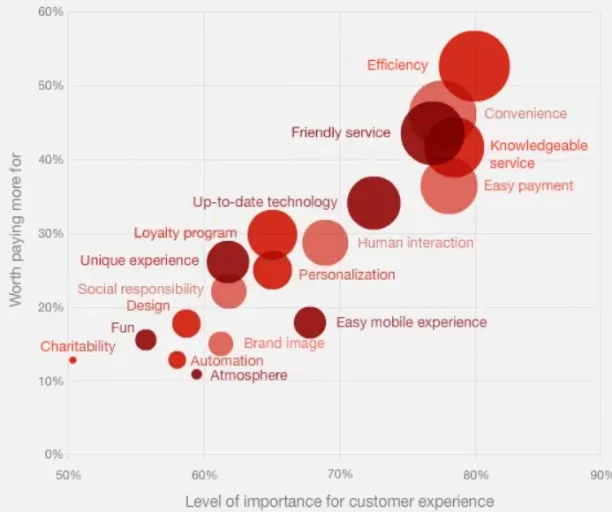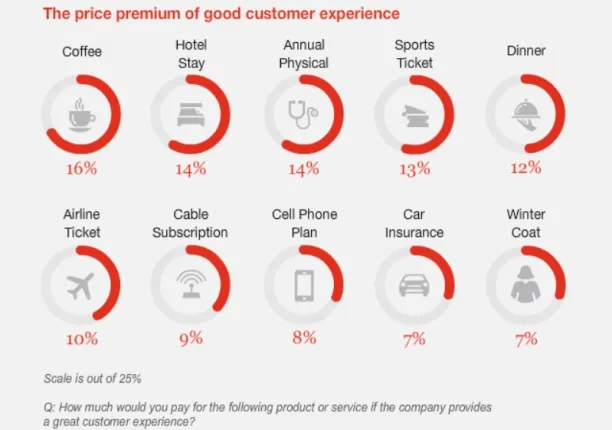Conversational Commerce: Benefits & Best Practices in 2024


Conversational commerce, also known as chat commerce, aims to be present where clients are, doing away with websites and apps that obstruct interaction and streamlining B2C interactions.
As you can see from the image above, billions of people are actively using messaging apps such as WhatsApp, WeChat, Messenger, etc. as of 2022. This is where consumers are located now. Thus, conversational commerce firms should aspire to offer an omnichannel for consumers on messaging apps through chatbots, voice assistants, live chat to:
- Solve customer inquiries.
- Ask questions to learn about customers’/potential leads’ needs and preferences.
- Recommend customized offers and products.
- Provide payment gateways.
Although there is a lot of promise for businesses with this new approach to commerce, not all managers are fully aware of conversational commerce’s benefits. Additionally, it is challenging for firms to get noticed in the competitive e-commerce world.
As a result, in this article, we first will discuss the benefits and significance of chat commerce for your company. Then, we will discuss the best conversational commerce practices such as using chatbots, gathering customer data, and coming up with a strategy that will differentiate you from your rivals. We include conversational commerce examples to help readers grasp the topics in each section.
Top 4 benefits of conversational commerce
1. Enhanced customer satisfaction
Conversational commerce improves the customer experience by providing consumers a personalized, quick, and convenient purchase experience.
According to PwC (see Figure 2) factors such as:
- Friendly purchasing experience,
- Fast and convenient purchasing process and checkout,
- Using customer data for ease their decision process,
- And efficient customer service, among others, positively affects firms’ sales.
Figure 2: Factors customers value for their purchasing experience

In this regard, the implications of conversational commerce vis-a-vis customer satisfaction will be:
- Convenient checkout: Around 70% of times customers create carts and leave them before proceeding to checkout. Companies can remind customers to finalize their purchase and pay for it directly via using messaging app chatbots. Thus, customers can purchase products and pay for them all on a single platform.
- Collecting customer feedback: Businesses can discover the needs and wants of their clients by interacting with them. As a result, e-commerce businesses can more accurately gauge demand for particular products. Additionally, they can assess the impact of chatbots in their marketing and sales effort.
- Thanks to the chatbot analytics for instance, companies can monitor KPIs such as:
- Engaged users,
- New users,
- Retention rate,
- Leads generation etc.
- Thanks to the chatbot analytics for instance, companies can monitor KPIs such as:
- Personalized offers: Everybody has different needs. As a result, 30% of customers are willing to pay more for customized products. Conversational commerce improves personalized recommendations because it gets to know the customer through engaging with them. For instance, in Figure 3, you can see that a chatbot introduces and recommends the features of inverter air conditioners for a specific customer.
- 7/24 availability: People buy things from the internet around the clock. Therefore, today’s businesses must be accessible 7/24 to assist customers with their purchasing decisions or to respond to their questions. Chatbots for messaging apps allow businesses to engage with customers around-the-clock. They are available 24/7 to provide personalized products and respond to customers’ frequently asked questions.
Figure 3: Chatbot offers personalized products.

2. Higher lead to conversion rate
Conversational commerce has potential to increase lead to conversion ratio around 2.5 times since:
- Interacting with customers (in person or via chatbots) leads to understanding their needs. Thus companies can offer the products that satisfy their needs.
- Collecting customer data allows companies to perform effective personalized offers and discounts.
- If you deploy chatbot 7/24 availability provides your company a competitive advantage against your rivals that are inaccessible for around the clock.
3. Increase customer loyalty
Conversational commerce allows more loyal customers which allow repeated sales.
Knowing your clients helps you consistently meet their needs. Since they experience a sense of fulfillment, they become more committed to your e-commerce business. According to Business Insider, personalized offerings, for example, improve the likelihood that customers will repurchase by more than 40%.
Additionally, PwC’s research demonstrates that better customer service is associated with more repeated customers in general.
4. A survival strategy for SMBs
It can be tough for small and medium-sized businesses (SMBs) to compete on pricing with e-commerce/retail giants. Giants’ higher trading volume enables them to take advantage of economies of scale and reduce their costs.
On the other hand, e-commerce giants can struggle to respond to customer inquiries quickly due to their higher trade volume. A pop culture reference for this scenario is demonstrated in the scene below (0:50 mark):
Customers may spend up to 16% extra for the same products, according to PwC, if they receive good customer service (see Figure 5). As a result, SMBs must implement a successful conversational commerce strategy if they want to survive and expand.
Figure 5: Customers willing to pay more for effective customer service.

Co-incidentally, the beginning of conversational commerce happened when the market share of the largest e-commerce companies fell after 2018 (see Figure 6). AIMultiple thinks there is a connection between the growth of conversational commerce and the declining market share of the major e-commerce companies. This interpretation also illustrates that conversational commerce is a suitable growth strategy for SMBs.
Figure 6: Comparison of E-commerce giants market share (2022 vs 2018)

If you want to learn top 10 eCommerce technology to cope with eCommerce giants you can read our Top 10 eCommerce Technologies with Applications & Examples article.
Top 6 conversational commerce best practices
In this section we will introduce 6 conversational commerce best practices to help your business to perform it effectively. These best practices aim to enhance:
- Customer awareness regarding your products.
- Ease their decision making process.
- Increase customer retention.
1. Deploy chatbots on messaging apps:
According to McKinsey, today’s consumer needs a timely response. To provide customers with relevant products and address their inquiries fast, businesses must implement chatbots that can understand customer intent.
By deploying chatbots you can enhance your brand awareness by reaching out to more customers, ease their decision-making process, and increase customer retention by serving them 7/24. Also, chatbots can significantly reduce customer service costs. For instance Cars24 reduced its customer service costs more than 70% thanks to chatbots.
One important issue for your company is working with a reliable chatbot firm with experience in the industry you work to assure the success of a chatbot. Because chatbot failures cost businesses a lot of money and reputation. To find a suitable vendor you can check our 50+ Chatbot Companies To Deploy Conversational AI article.
We also want to remind businesses how crucial people are to customer service tasks. Bots are useful tools for dealing with customers’ general inquiries and processes. But occasionally, human intelligence will be necessary to ensure effective customer care. Customers should contact humans as soon as possible in these situations.
2. Check demographics/geographies to pick suitable messaging app
Businesses must be aware of which messaging services are popular in a given geographic-demographics in order to ensure customer awareness. Facebook Messenger, for instance, can be an excellent medium for connection if your target market is Americans between the ages of 25 and 34. However, it is not that effective for the 18–24 age group (see Figure 7).
Knowing this information will help you increase your ROI. For instance, the UK-based fashion brand Crew Clothing increased brand awareness using Facebook ads and a chatbot set up on Facebook Messenger because they targeted the 25–34 age range for their campaign, and in the UK, people in this demographic frequently use Facebook’s platforms for communication. The initiative resulted in almost 50% lead to conversion rate.
Figure 7: Share of Facebook Messenger users in US 2022.

3. Ease the payment process
A customer who is fully committed to making a purchase can be helped by your conversational commerce strategy to complete the deal before they change their minds. Your consumers can finish a transaction by using a messaging app and a computer program like Podium Payments.
Your business will be able to naturally text clients with invoices as part of ongoing two-way communication after you implement an SMS payment solution. Using their own smartphone, the customer can conveniently finish the transaction at that point.
This streamlines the payment process, reduces the likelihood of cart abandonment, and finalizes the sale before the customer gets cold feet.
4. Utilize personal information for customized offerings
Consider operating a flower shop and receiving a request from a man for bouquets that his girlfriend might like for Valentine’s Day. In this situation, it would be beneficial for your business to gather information about her girlfriend’s birthday, their anniversary, and other significant days in order to sell the couple more flowers on different occasions.
Chatbots can remind this individual that he has not bought flowers for her in a while. Since, according to Business Insider, approximately 50% of these interactions result in a purchase.
You can apply such an example to your specific business and increase your brand awareness and customer engagement.
5. Provide post-sales services to nurture trust
Making new clients into loyal ones is crucial for businesses. Repeated purchases can help your firm grow considerably. Therefore, once the transaction is complete, e-commerce businesses should embrace transparency and friendliness.
For instance, customers can receive information about the status of their orders via chatbots, which can show that the business is passionate about its post-sale services and not just pre-sales.
6. Collect customer feedback
Asking your customers via surveys about their experience doing business with you is an effective way to know the areas in which you are underperforming. We recommend companies to conduct short surveys in different stages of interaction such as:
- Firstly right after the purchase (while the experience is still raw for customers)to see how effectively you have interacted with your clients.
- Another survey should be conducted after the orders have arrived to your customers to see how effective your after sales services and deliveries have been.
If you are searching for the best conversational commerce platforms to start your conversational commerce journey, you can read our Conversational Commerce Platforms: Data-driven Benchmarking article.
If you have more questions regarding conversational commerce strategy of benefits you can reach us:
Source: Figure 1

Cem has been the principal analyst at AIMultiple since 2017. AIMultiple informs hundreds of thousands of businesses (as per similarWeb) including 60% of Fortune 500 every month.
Cem's work has been cited by leading global publications including Business Insider, Forbes, Washington Post, global firms like Deloitte, HPE, NGOs like World Economic Forum and supranational organizations like European Commission. You can see more reputable companies and media that referenced AIMultiple.
Throughout his career, Cem served as a tech consultant, tech buyer and tech entrepreneur. He advised businesses on their enterprise software, automation, cloud, AI / ML and other technology related decisions at McKinsey & Company and Altman Solon for more than a decade. He also published a McKinsey report on digitalization.
He led technology strategy and procurement of a telco while reporting to the CEO. He has also led commercial growth of deep tech company Hypatos that reached a 7 digit annual recurring revenue and a 9 digit valuation from 0 within 2 years. Cem's work in Hypatos was covered by leading technology publications like TechCrunch and Business Insider.
Cem regularly speaks at international technology conferences. He graduated from Bogazici University as a computer engineer and holds an MBA from Columbia Business School.
To stay up-to-date on B2B tech & accelerate your enterprise:
Follow on

Comments
Your email address will not be published. All fields are required.